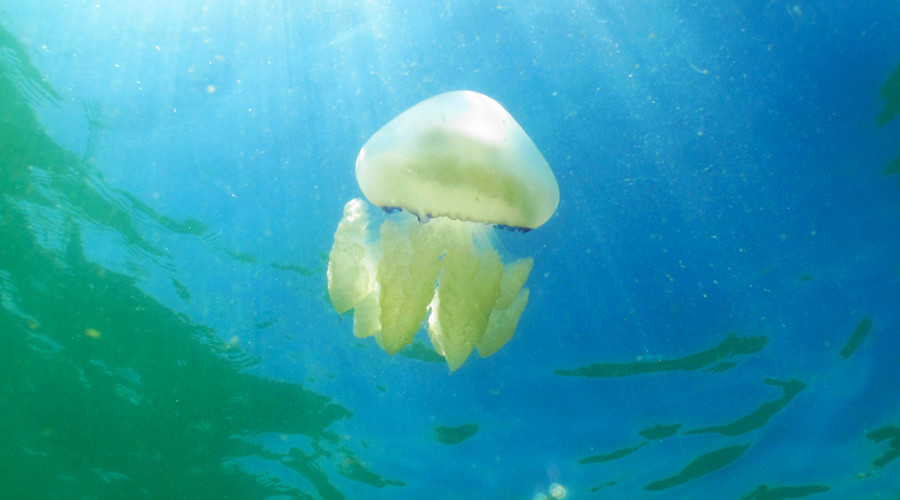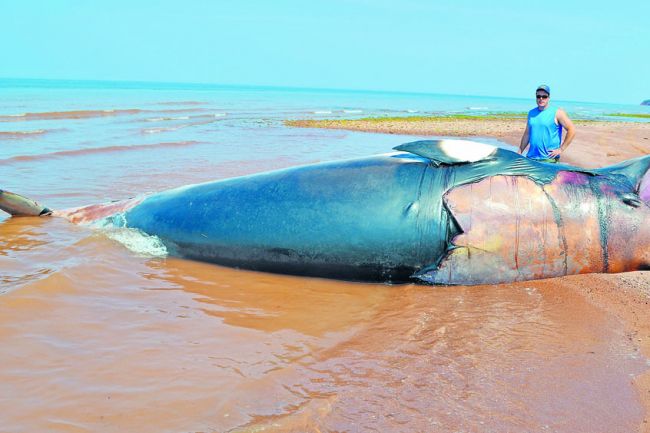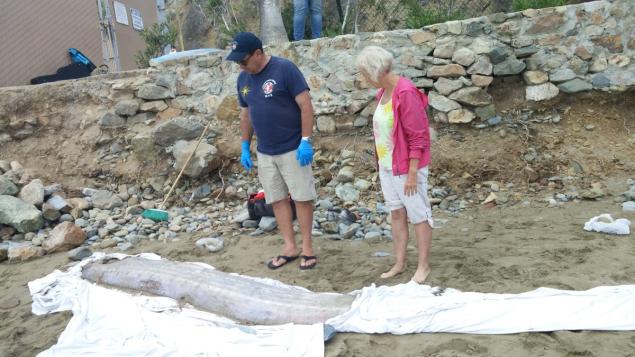
© Gleb Garanich / Reuters
Deadly Portuguese man o' war jellyfish, with tentacles as long as five London buses, have been sighted around the English coastline, prompting fears of invasion among conservationists.
The species usually lives far out in the ocean, but experts from the Marine Conservation Society (MCS) say that the Society's survey team has received many more reports of them near the shoreline this year.
The venomous jellyfish, which can reach 160 feet in length, can be deadly. Surfers and swimmers are not always able to spot the creatures before they are stung.
Last month, there were 30 reports from locals in the southern English counties of Devon and Cornwall of the jellyfish drifting near the coast.
MCS Biodiversity and Fisheries program manager Dr. Peter Richardson said:
"Our National Jellyfish Survey suggests significant recent rises in the numbers of some jellyfish species in UK seas, most notably the barrel jelly fish."
"The million-dollar question is why this is happening? At the moment we just don't know," he said.
In 2013 there were 1,000 reports involving hundreds of thousands of jellyfish in England, he added.
"Last year the number of reports increased again to over 1,400 reports, and by July this year the survey had already received over 1,000 reports."
"August is usually a peak month for jellyfish sightings and so 2015 look set to be another record breaker."




Comment: This type of once rare event has become increasingly common across the world over recent years and perhaps rather ominously often in association with a rise in seismic activity. Maybe the oarfish is known as the 'earthquake fish' according to Japanese folklore for a sound and solid reason borne of generations of first-hand experience? See in addition:
Another deep-sea dwelling oarfish surfaces, this time in Antique, Philippines
Rare 17-foot-long oarfish found dead off Catalina Island, California
Rare deep sea oarfish washes up on marsh in Aramoana, New Zealand
Deep sea oarfish caught by Vietnamese fishermen: Consequences of earthquakes?
Something amiss in the ocean depths? Rare Oarfish washes up on beach in Japan
Deep sea oarfish washes up in La Paz, Baja California Sur, Mexico
18-foot oarfish caught by Catalina marine science instructor in California
Waiting for the big one: giant oarfish start shock waves in LA
Second rare oarfish washes up in Southern California
Something amiss deep down? Bizarre-looking oarfish washes ashore on Cabo San Lucas beach
Rare "King of Herrings" Found off Swedish Coast
Appearance of "Earthquake fish" spook Japanese
England: Monster of deep washes up on beach